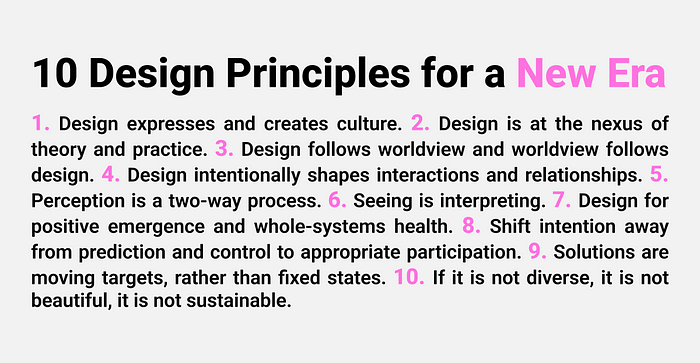Member-only story
Here are 10 things every Designer should be invited to think about
Embracing a systemic, regenerative, and inclusive mindset to be part of the solution, not the problem.

»Design is at the nexus of Theory and Practice.
Design is where art and science meet.
In fact, it integrates information from almost all the disciplines into which we have separated human knowing and doing.«
Wahl, D. C. (2016: 130)
The Power of Design
Design is so powerful. The ability to imagine novelty and then act on it is inherent in every human being. Everyone has the potential to create, therefore everyone is a creator. Some are more skilled and experienced than others, like professional designers, but everyone has the fundamental ability to create and design. Professional creatives engage in creative thinking and doing and use a plethora of mediums to express this process.
The creative process, though different every time, still has some consistent characteristics:
- Creative work deals with uncertainty constantly — the whole creative process is a dance with ambiguity and uncertainty, guided by a clear vision or goal.
- Creatives expand reality, consciously or unconsciously, by imagining and skilfully manifesting novel realities.
- Creative work combines separate sources and subjects by drawing inspiration from a wide range of fields and knowledge.
- Creative work bridges the gap between theory and practice, pursuing only the theory that works in practice.
- Creative work is often characterized by an ‘explorer in quest’ mindset and a culture of ‘failing early and often’, where making mistakes is seen as a necessary step of learning.
- Playing with an idea or method and having fun with it, are important parts of creative work
My motivation to study Design was and is to ‘design’ a better world. In 2016, just before I started a course in Industrial Design, I read Cradle to Cradle by Michael Braungart and William McDonough. In it, they painted a vision of a great future, based on ethical production and…








